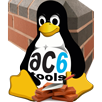USB CDC Host demo (FS or HS) STM32F7 Discovery
Firstly, no issues with debugging / SW4STM32. All good. Thank you ![]()
The demo however, queries an attached device, and ends with the message “No registered class for this device.” This is on the FS and HS examples from 1.0.3 F7 cube firmware examples.
I was looking for somewhere there was a list of supported classes maybe, or to associate a connected VID/PID with a class... Maybe I’ve missed that. Otherwise, it reads the serial number, VID, PID and info from the attached device, so I’m assuming that it’s ok.
I did only solder two USB type B sockets together back to back, so there’s no ID line, only power and D+/D-. (two cables plugged back to back in other words.) These won’t be swapped or anything, but like I said, it’s coming up ok with VID/PID and other info ok.
Any ideas?


